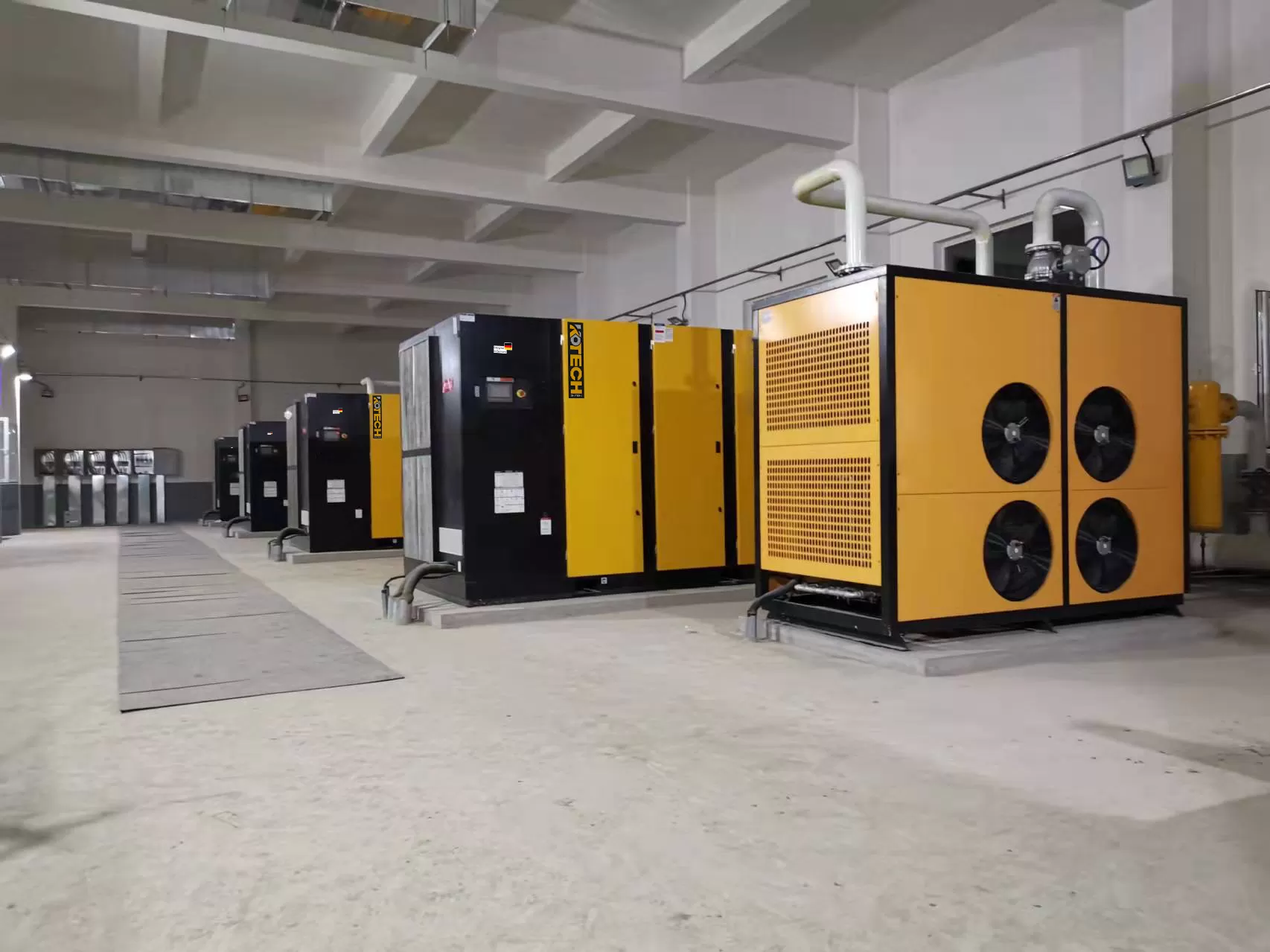What are the air compressors in the glass industry used for As the main equipment of the glass industry, the air compressor consumes more than 30% of the total electricity consumption of all equipment . With the technological innovation and development of the air compressor industry, PM air compressor(intelligent permanent magnet screw air compressor) under the call of national energy conservation and emission reduction, has obtained a good energy-saving effect, more and more glass companies choose a new permanent magnet screw air compressor to help industrial upgrading, compared to the old piston machine, intelligent permanent magnet screw air compressor energy saving of more than 25%, the correct choice of air compressor, will bring a significant reduction in electricity costs to glass container enterprises.
Glass according to the manufacturing process can be divided into flat glass, float glass and tempered glass, frosted glass, sandblasted glass, embossed glass, laminated glass, insulating glass and so on. Take the common flat glass in our lives as an example, let’s take a look at the flat glass manufacturing process.
Material mixing: In the raw material formula, the manufacturer can make appropriate adjustments according to the specific products. Ordinary flat glass is made of raw materials such as quartz sand, silica sand, potassium fossils, soda ash, and glauber’s salt, and these raw materials are mixed according to a certain proportion and mixed thoroughly and evenly.
Melting of raw materials: the raw materials are mixed into the furnace, and the temperature in the furnace can be determined according to different products, generally about 1200 to 1600 degrees, and is sealed and heated in the furnace for a certain period of time and then poured out.
Glass molding: the heated glass melt flows into the tin tank and floats on top of the molten metal tin liquid, the glass molding generally has blowing, pressing, centrifugal rotation, firing (auxiliary) and other ways, and the flat glass is pressed out by vertical introduction method or flat pulling method and calendering method, forming a wide and thick, uniform and flat glass belt.
Cooling of the glass: The glass belt leaves the tin bath at a temperature of about 600 degrees Celsius, and then enters the annealing chamber or continuous slow cooling kiln to gradually reduce the temperature of the glass to 50 degrees Celsius. The glass produced by this cooling method is also known as annealed glass.
Glass cutting: the original sheet itself is very large, the general length and width can be about 3 * 2 meters, the glass factory will be cut into different sizes according to customer needs (cutting needs to add edging size)
Glass grinding edge: just cut glass edge is very sharp, glass factory can be according to customer needs to grind fog edge or bright edge, in general, the glass brightness and aesthetic requirements of customers will polish the edge.
Inspection and packaging: Glass after edging undergoes several stages of quality checks to achieve safe, standard quality, and then packed into storage, storage or transportation.
Glass manufacturing industry, in the production line, raw material line and other workshops need to use compressed air, glass industry compressed air is mainly used for combustion, media transportation, dust removal system blowback, equipment and instrument action air source. For most glass manufacturing enterprises, the investment cost of a good glass production line is very high, once it starts to be put into production, it is 24 hours without interruption, and it is impossible to control production and inventory like other industry enterprises by stopping production and starting work.
Therefore, for the stability of compressed air has very high requirements, Kotech water lubrication oil-free screw air compressor for the glass industry sales experience, combined with the actual production conditions of customers, according to local conditions, for the glass industry to provide reliable low-pressure energy-saving solutions, while ensuring stability, for customers to reduce costs and increase efficiency.



